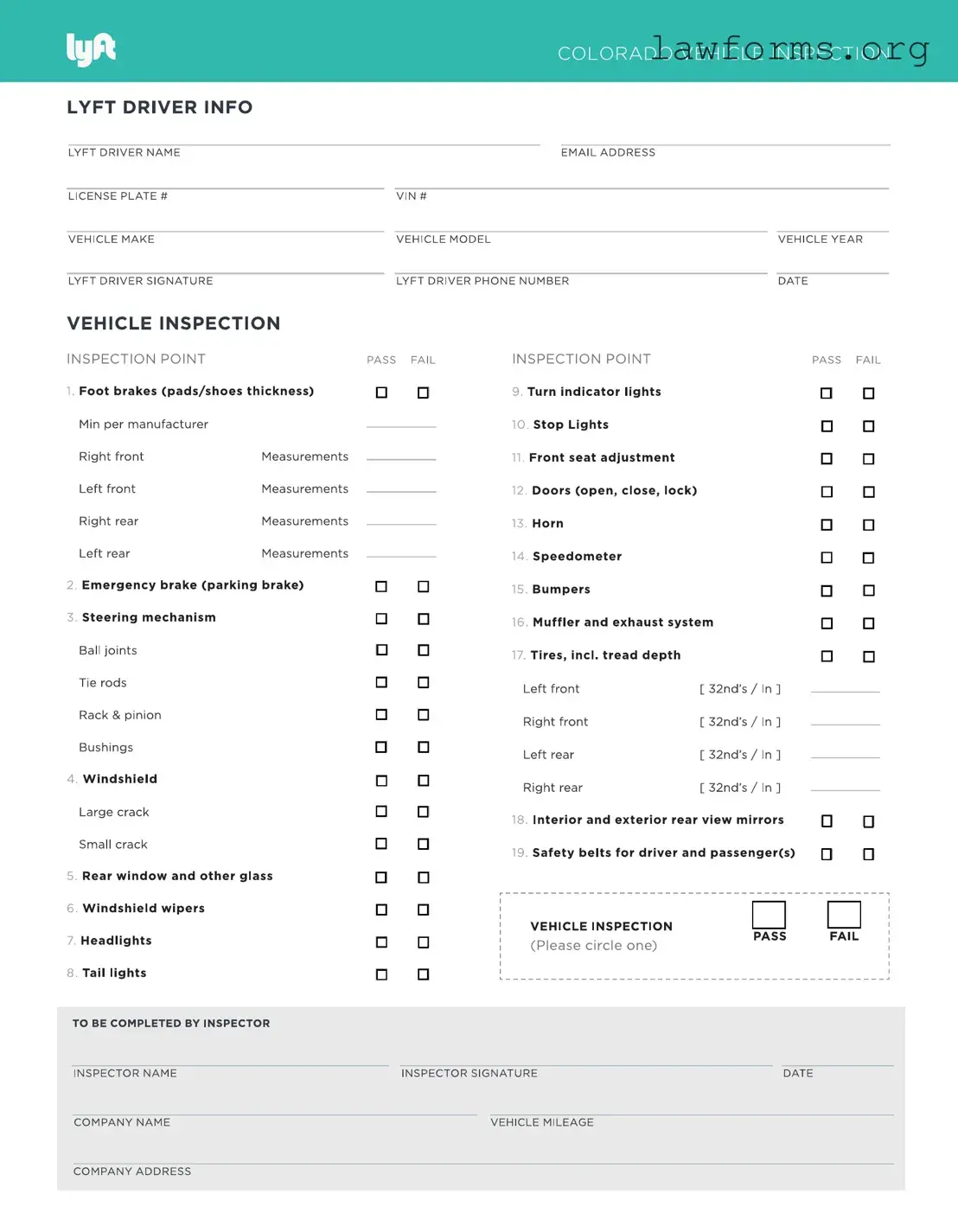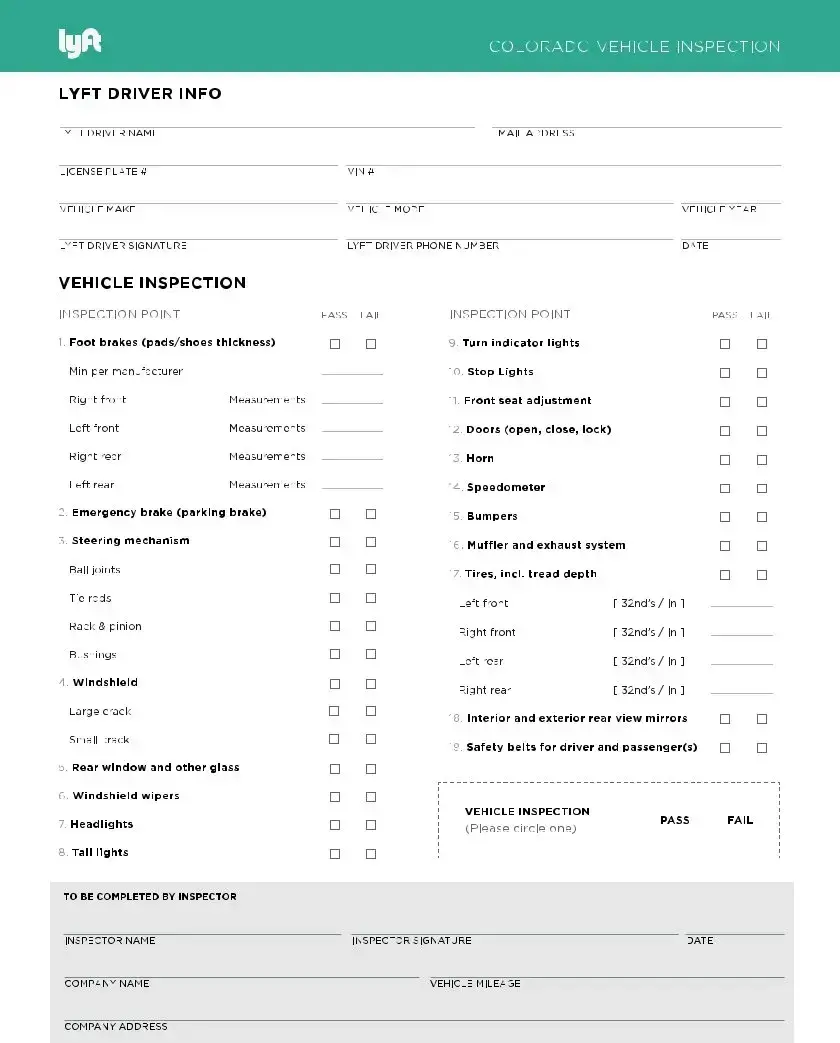Fill Out a Valid Lyft Inspection Template
The Lyft Inspection Form is a crucial document that ensures vehicles meet safety and operational standards for rideshare services. Completing this form is essential for drivers looking to maintain compliance and continue providing safe rides to passengers. Ready to get started? Fill out the form by clicking the button below.
Customize Document Online

